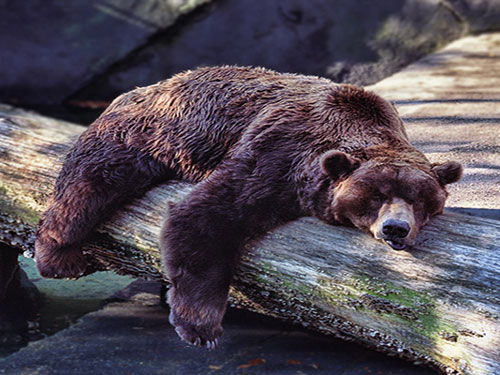A Scientific Look at the Rarest Color in the Natural World
📌 Published on the UNESCO Science and Technology Club
Color — Nature’s Silent Language
Nature has always spoken in a language of its own — silent yet profound. One of its most powerful tools of communication is color. From the dazzling wings of butterflies to the bright yellow of frogs, colors in the natural world are more than just beauty; they’re tools for survival, reproduction, and warning.
Animals can evolve to display nearly every color of the rainbow — white, black, red, green, yellow — yet one color remains truly rare: blue.
But why is blue so exceptional? Why do most blue-colored animals appear blue rather than actually being blue? The answer lies in physics, not just biology.
The Origins of Color in Animals
Pigments: Nature’s Color Factories
Most colors in animal bodies come from pigments — specialized chemical compounds produced by pigment cells (chromatophores) that absorb certain wavelengths of light and reflect others.
Common pigments produce colors like:
Red (carotenoids)
Yellow (flavonoids)
Green (from diet or chemical combinations)
Brown/black (melanin)
Orange and pink
However, there’s one shade nature struggles to make with pigments alone: blue.
The Blue Puzzle — Why True Blue Is So Rare
Animals Aren’t Blue — They Just Look Blue
Less than 1% of animals that appear blue to us actually contain blue pigment. Most are simply master optical illusionists. Their blue appearance results from the way their physical structures interact with light.
The Science Behind “Fake” Blue
This phenomenon is called structural coloration — it uses microscopic structures that scatter and reflect light in such a way that only blue wavelengths reach our eyes. The rest are absorbed or canceled out.
This optical engineering is far more complex than using chemical pigments, which is why blue is so rare in animals.
Iconic “Blue” Animals That Aren’t Actually Blue
1. The Morpho Butterfly
The Morpho butterfly’s wings contain nanostructures that scatter light and reflect only blue wavelengths. Interestingly, if you fill these structures with alcohol, the butterfly changes color — proof that its blueness is structural, not pigment-based. Once dry, it returns to its shimmering blue.
2. Blue Birds Like the Blue Jay
Birds like the Blue Jay don’t have blue feathers. Instead, the structure of their feathers scatters light in a way that only blue is reflected. It’s pure physics, not chemistry.
3. Blue Fish and Marine Creatures
Many marine animals also appear blue but lack any true blue pigment. Their brilliance comes from microscopic layering and light reflection.
The Few True Blues in Nature
The Olive-Winged Butterfly & Blue Poison Dart Frog
There are rare exceptions in nature where true blue pigment exists.
The olive-winged butterfly is one of the few insects with genuine blue pigmentation.
The blue poison dart frog is one of the only known vertebrates with blue pigment in its skin.
What sets these animals apart is that their color doesn’t shift with the viewing angle, indicating the presence of actual pigment, not a light trick.
Why Blue Is So Important in Nature
A Warning to Predators
In many animals, the color blue functions as a warning. Bright, unusual colors often signal danger — “Don’t eat me; I’m poisonous.”
This visual cue saves both predator and prey from a fatal mistake.
A Tool for Courtship and Differentiation
Blue can also be a powerful tool in sexual selection. Because it’s rare and difficult to produce, animals that appear blue — even if artificially — may stand out more to potential mates.
In evolutionary terms, the ability to “fake” blue offers a competitive edge.
Blue Beyond Animals — Plants, Foods, and Landscapes
Is the Sky Really Blue?
We often think of the sky and ocean as naturally blue, but that’s an illusion. Their blue hue comes from Rayleigh scattering, a process that scatters shorter blue wavelengths more than others.
Blue in Flowers and Food
Fewer than 10% of flowers are blue, and there are virtually no naturally blue foods. Even blueberries are technically more purple than blue.
Nature doesn’t favor blue in its biological palette — it’s rare across kingdoms.
Can You Trust Your Eyes?
We’ve all heard the phrase:
“Seeing is believing.”
But in nature, what you see isn’t always what you get. The animal kingdom masterfully manipulates light and perception to create color illusions that fool even the sharpest eyes.
Conclusion: Blue as a Masterstroke of Evolutionary Art
Blue — whether in butterfly wings, bird feathers, or frog skin — is a symbol of clever evolution. When real pigment isn’t available, nature invents elaborate optical structures to mimic what’s missing.
So next time you spot a blue animal, ask yourself:
Is it really blue — or just pretending to be?
Either way, the deception is nothing short of beautiful.
📌 Want to explore more scientific wonders of nature? Visit us at the
👉 UNESCO Science and Technology Club

